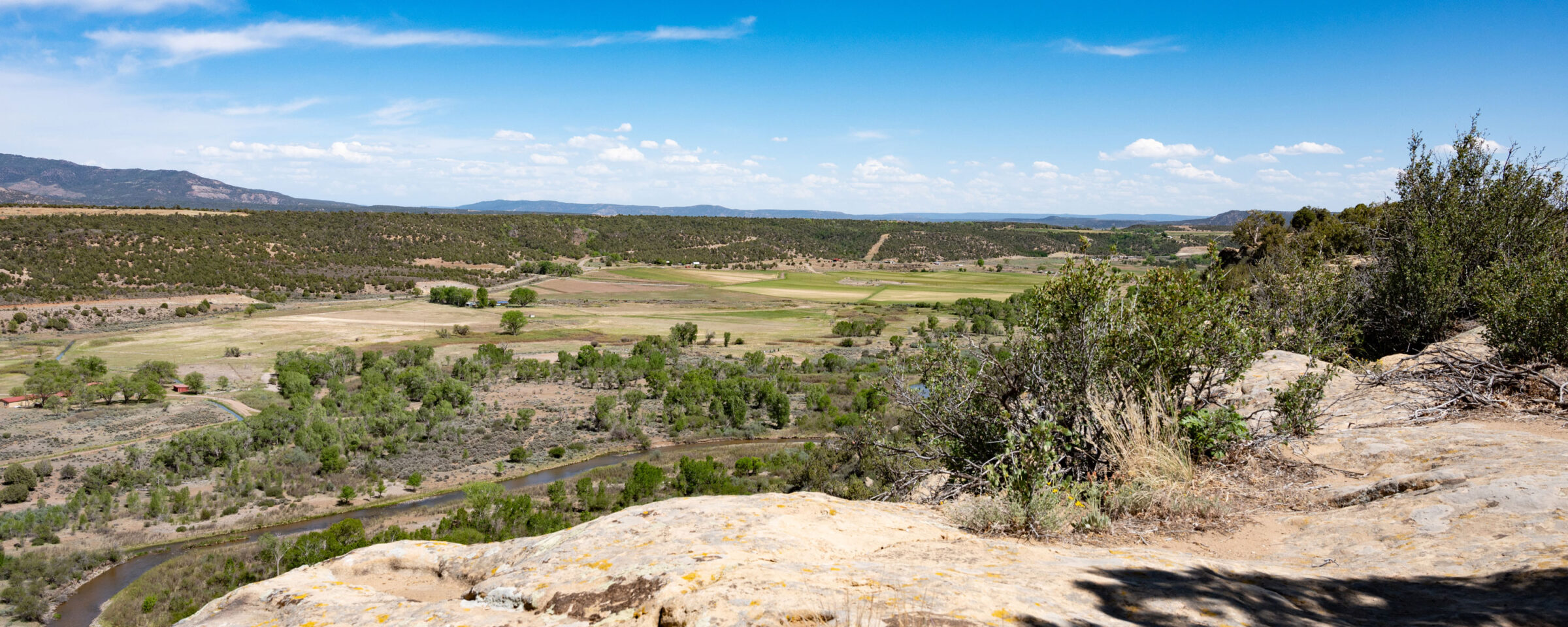
From Arid Lands to Economic Engines: The Ute Tribes’ Journey of Resilience and Self-Determination
By [Your Name/Journalist’s Name]
The vast, often austere landscapes of the American West bear witness to a remarkable transformation. Here, where generations of Native Americans endured poverty and dispossession, a new narrative of economic power and self-determination is unfolding. Among the most compelling examples are the Ute Tribes – specifically the Southern Ute Indian Tribe, the Ute Indian Tribe of the Uintah and Ouray Reservation, and the Ute Mountain Ute Tribe – who have harnessed their inherent sovereignty and natural resources to build formidable economic empires, challenging long-held stereotypes and redefining what it means to be a modern tribal nation.

For centuries, the Ute people, traditionally nomadic hunter-gatherers, roamed vast territories across Colorado, Utah, New Mexico, and Wyoming. Their way of life, however, was irrevocably altered by westward expansion, disease, and the imposition of treaties that systematically stripped them of their ancestral lands. By the early 20th century, confined to reservations often on marginal lands, many Ute communities faced profound poverty, a legacy of federal policies designed to assimilate rather than empower. Houses were dilapidated, educational opportunities scarce, and healthcare rudimentary.
"My grandparents spoke of a time when despair was a constant companion," reflects Loretta Cloud, an elder from the Southern Ute Indian Tribe. "But they also spoke of resilience, of the spirit that refused to break. That spirit is what drives us today."
The turning point for many tribes, including the Ute, arrived with the self-determination era of the 1970s, marked by legislation like the Indian Self-Determination and Education Assistance Act of 1975. This pivotal shift allowed tribes to manage federal programs and services themselves, laying the groundwork for greater control over their own destinies and resources. For the Ute, this newfound autonomy, coupled with the discovery and development of significant oil and natural gas reserves beneath their lands, proved to be a game-changer.
The Bedrock of Black Gold: Energy Development
The primary engine of the Ute Tribes’ economic resurgence has been their strategic development of natural resources, particularly oil and natural gas. The Uintah and Ouray Reservation, home to the Ute Indian Tribe of the Uintah and Ouray, sits atop a portion of the vast Uinta Basin, rich in hydrocarbons. Similarly, the Southern Ute Indian Tribe’s reservation in southwestern Colorado is a major producer of natural gas.
Unlike previous eras where external companies exploited tribal resources with minimal returns to the tribes, modern Ute nations have asserted their sovereign rights to control, manage, and profit directly from these assets. They’ve established their own tribal energy departments, negotiated sophisticated agreements with energy companies, and in many cases, formed their own tribal-owned enterprises to engage in exploration, production, and distribution.
The Southern Ute Indian Tribe, often cited as one of the most economically successful tribes in the United States, exemplifies this model. Their flagship entity, the Growth Fund, established in 1999, manages a multi-billion-dollar portfolio generated primarily from energy revenues. It operates with a clear mandate: to preserve and grow the tribe’s assets for current and future generations.
"We learned early on that we couldn’t just rely on others to manage our wealth," states a former Southern Ute Tribal Council member, who requested anonymity due to ongoing business negotiations. "We had to become experts ourselves. Our vision was not just about accumulating money, but about securing our future, ensuring our children and grandchildren would never know the poverty our ancestors endured."

This philosophy has led the Southern Ute to diversify their investments globally, ranging from real estate and telecommunications to private equity and green energy initiatives, operating with a shrewdness that has earned them the moniker "the Wall Street of Indian Country."
The Ute Indian Tribe of the Uintah and Ouray Reservation has also leveraged its significant energy reserves to transform its community. Revenues from oil and gas have funded critical infrastructure projects – roads, water systems, and broadband internet – that are often lacking in remote tribal communities. They’ve also invested heavily in tribal services, from education and healthcare facilities to housing and elder care programs, directly improving the quality of life for their members.
Beyond the Wellhead: Diversification and Sustainable Growth
While natural resources have provided the initial capital, the Ute Tribes understand the volatility of commodity markets and the importance of diversification. They are actively pursuing strategies to build sustainable, long-term economies that are not solely dependent on energy.
The Ute Mountain Ute Tribe, whose reservation spans parts of Colorado, Utah, and New Mexico, showcases a different facet of Ute economic ingenuity. While they also have some energy interests, they have heavily invested in agriculture and tourism. Their Towaoc Farming and Ranching enterprise is a significant player in the region, cultivating thousands of acres and raising livestock.
Crucially, the Ute Mountain Ute Tribe has embraced their cultural heritage as an economic asset. The Ute Mountain Tribal Park, often called the "Sleeping Ute Mountain," offers unique, tribally-guided tours of ancestral Puebloan cliff dwellings and archaeological sites, providing both cultural preservation and tourism revenue. Their Ute Mountain Casino Hotel, located near the popular Mesa Verde National Park, further diversifies their income stream, creating jobs and drawing visitors.
"Our land is our identity," says a Ute Mountain Ute cultural preservation specialist. "When we invite people to our Tribal Park, we are sharing our history, our stories. It’s not just about tourism; it’s about education and sustaining our culture."
All three Ute Tribes are exploring renewable energy opportunities, recognizing both the environmental imperative and the potential for new revenue streams. Solar farms, wind projects, and geothermal initiatives are part of their long-term vision, moving towards a more diversified and environmentally conscious energy portfolio.
Challenges on the Path to Prosperity
Despite their remarkable successes, the Ute Tribes’ economic journey is not without its challenges. The boom-and-bust cycles inherent in natural resource industries mean that tribal budgets can fluctuate dramatically. Maintaining and upgrading infrastructure in remote areas is an ongoing battle.
Furthermore, ensuring that the wealth generated translates into tangible benefits for every tribal member remains a priority. Issues such as unemployment, healthcare disparities, and educational attainment, while significantly improved, are complex legacies that require continuous investment and innovative solutions.
Jurisdictional complexities also persist. Operating businesses on sovereign tribal land within state boundaries can lead to conflicts over taxation, regulation, and law enforcement. Tribal leaders frequently advocate for greater recognition of tribal sovereignty and stronger government-to-government relationships with federal and state entities.
Perhaps the most profound challenge is balancing rapid economic development with the preservation of Ute culture, language, and traditional values. Tribal leaders are acutely aware of the need to prevent the erosion of identity in the face of modernity and affluence. Educational programs focusing on Ute language and history, cultural events, and support for traditional arts are vital components of their holistic development strategy.
"We want our children to have opportunities our ancestors could only dream of," states a Southern Ute Tribal Council member. "But we also want them to know who they are, to speak our language, to understand our ceremonies. Economic prosperity means nothing if we lose our soul."
A Model for Self-Determination
The Ute Tribes’ economic ascendancy stands as a powerful testament to their resilience, strategic vision, and the inherent power of tribal sovereignty. They are not merely recipients of federal aid or passive players in the broader economy; they are sophisticated economic actors, managing complex portfolios, creating jobs, and investing in the future of their people.
Their story offers invaluable lessons for other indigenous communities and developing nations worldwide: that true self-determination is rooted in economic independence, that natural resources can be a blessing when managed wisely and ethically, and that a deep connection to culture and land can coexist with, and even enhance, modern economic success.
From the quiet dignity of their traditional ways to the bustling boardrooms where multi-million-dollar deals are struck, the Ute Tribes are charting a course that honors their past while boldly embracing their future. Their journey from poverty to prosperity is not just an economic success story; it is a profound declaration of enduring sovereignty, a beacon of hope, and a powerful reminder that the spirit of a people, once empowered, can overcome any adversity. The Ute nations are not just building wealth; they are building a legacy for the next seven generations and beyond.


